Ideally, hospitals, nursing homes, and other healthcare facilities should evoke images of healing and comfort. But for many workers on the front lines of patient care, these settings can be hazardous—especially if they frequently lift and reposition patients manually. Hospital patients are older, heavier, and sicker than they used to be, making manual handling an even more serious hazard.
In fact, patient handling can be as risky as construction work. According to the Bureau of Labor and Statistics, nurses’ aides, orderlies, and attendants had 44,930 days away from work due to injury in 2007; their injury rate was 465 cases per 10,000 workers. Compare this to construction workers, who had 34,180 days away from work and an injury rate of 394 cases per 10,000 workers. The musculoskeletal disorder rate of the healthcare workers cited above (252 cases per 10,000 workers) was more than seven times the average national rate for all occupations.
The physical hazards of manual patient handling are well documented. Yet much misinformation persists about safe handling and the use of equipment, such as ceiling and floor lifts, to move patients. Disseminating accurate information is an important step in eliminating injuries.
Myth: If you use proper biomechanics and lifting techniques when moving patients manually, you can avoid injury.
Many studies show that training caregivers on how to use proper body mechanics during patient handling has no impact on work practices or injury rates—perhaps because the biomechanical stresses of manual lifting exceed what the body can handle. Healthcare professionals and researchers have begun to question whether existing biomechanics research (on which caregivers’ training is based) can be generalized to patient care. Early studies examined the physical load of lifting a box with handles in the vertical plane. But patients aren’t static objects, and lifting and handling them more often take place in the lateral plane. Also, a systematic review of lifting studies done between 1960 and 2001 found that many popular manual techniques (such as the shoulder lift, through-arm lift, pivot lift, bear hug, and rock lift) aren’t recommended by research and are unsafe.
The revised lifting equation from the National Institute for Occupational Safety and Health is a tool that calculates the recommended weight limit (RWL) of two-handed manual lifting tasks. When used to assess a manual patient lift, this equation found the RWL was 35 lb, given the following ideal—but uncommon—conditions:
- The patient is cooperative and not combative.
- The amount of weight the caregiver handles can be estimated.
- Lifting is smooth and slow.
- The caregiver’s position relative to the patient and the weight being lifted doesn’t change.
Yet except for pediatric patients, patients weigh more than 35 lb, and a growing percentage are obese. According to one estimate, the average nurse lifts 1.8 tons per shift. What’s more, the ideal conditions listed above rarely exist, adding to the difficulty and unpredictability of patient handling. But despite all the evidence, “proper” lifting techniques remain a part of the nursing school curriculum.
Myth: You can move patients faster when you do it manually than when you use equipment.
In some cases, it is faster to move a patient manually. Nonetheless, using lift equipment is much safer. Usually, the extra time it takes to use equipment results from looking for the equipment in the first place.
On the other hand, manual handling may take more time if you need to wait for additional staff to assist you. One researcher found that using mechanical lift equipment to transfer patients took fewer personnel and about 5 minutes less (even accounting for the time needed to find and set up the equipment) than manual transfers. Installing fixed ceiling lifts in patient rooms can eliminate the extra time it takes to look for, retrieve, and conveniently store equipment.
Myth: Using mechanical equipment to move or reposition patients jeopardizes their comfort and safety.
Numerous studies show that use of mechanical lift equipment increases patient comfort and feelings of security compared to manual handling. Patients may even feel that use of the equipment makes them less of a burden to nursing staff.
You may find some patients are leery of the equipment; they may worry about their dignity as well as safety. Patient education can eliminate these concerns. Nurse managers, physical and occupational therapists, and even family members can reinforce to patients that the lift is for their safety as well as the caregiver’s and reduces the injury risk for both. (For an educational resource for patients and families, visit the website of the Safe Patient Handling Steering Committee of Washington State: http://www.lni.wa.gov/Safety/Research/SafePatient/.)
Myth: Lift equipment is expensive and many facilities can’t afford it.
Long-term benefits of proper lift equipment far outweigh the costs of injuries from manual patient handling. The benefits of safe patient-handling programs in hospitals have been demonstrated repeatedly. Where safe handling programs exists, related injuries, workers’ compensation claims and costs, and lost or modified workdays have decreased and worker satisfaction and retention have improved.
The payback period for the initial capital investment in program implementation (including equipment) is relatively short. In one hospital, the payback period for direct costs associated with a ceiling lift program was approximately 4 years; when indirect costs were considered, it was less than 2 years. In another hospital, the payback period was less than 1 year when indirect costs were considered. In Washington State, acute-care hospitals can receive a business and operating tax rebate of $1,000 per acute care bed as part of the Hospital Safe Patient Handling Law.
Myth: You don’t need to worry about patient-handling injuries if you are healthy and strong and have never had a problem.
It may seem logical to assume younger or more physically fit caregivers are less likely to be injured, but the research doesn’t support this. Although the risk of back injury rises with increasing age or years worked in nursing, younger or “healthier” caregivers do sustain patient-handling injuries. In fact, good health and strength may put these nurses at greater risk: Coworkers are four times more likely to ask stronger, fitter peers rather than older ones to assist with patient handling. (See Risk factors for manual handling by clicking on the PDF icon above.)
Also, leisure, household, and exercise activities may predict lower back pain. In nursing students, higher levels of moderate and vigorous physical activity have been shown to be a significant predictor of back pain.
And when nurses suffer back injuries, physical conditioning may not get them back to work sooner. A review of research of physical-conditioning programs aimed at promoting employees’ return to work found these programs didn’t reduce sick leave for workers with acute back pain.
Help end the injuries
Patient-handling injuries continue to exact a toll on healthcare workers. The nurse’s average age is rising faster than that of the workforce as a whole, and fewer younger people are entering the profession. When older nurses leave the profession through injury or attrition, the situation only worsens. It becomes more difficult to recruit new nurses and retain experienced nurses; ultimately, this contributes to a nursing shortage.
Healthcare organizations and their staff need to recognize the importance and benefits of a safe patient-handling program. A comprehensive program with effective risk assessment and risk control policies, adequate amounts of “no-lift” equipment, ongoing training in equipment use, and cooperation at all levels will improve staff health and safety.
Selected references
Alamgir H, Li OW, Yu S, Gorman E, Fast C, Kidd C. Evaluation of ceiling lifts in health care settings: patient outcome and perceptions. AAOHN J. 2009;57(9):374-380.
Baptiste A, Boda SV, Nelson AL, Lloyd JD, Lee WE. Friction-reducing devices for lateral patient transfers. AAOHN J. 2006;54(4):173-180.
Chhokar R, Engst C, Miller A, Robinson D, Tate, RB, Yassi A. The three-year economic benefits of a ceiling lift intervention aimed to reduce healthcare worker injuries. Appl Ergon. 2005;36:223-229.
Collins JW, Nelson A, Sublet V. Safe lifting and movement of nursing home residents. DHHS (NIOSH) Publication #2006-117. Department of Health and Human Services; 2006.
Mitchell T, O’Sullivan PB, Burnett A, et al. Identification of modifiable personal factors that predict new-onset low back pain: a prospective study of female nursing students. Clin J Pain. 2010;26(4):275-283.
Occupational Health & Safety Agency for Healthcare in BC. Ceiling Lifts as an Intervention to Reduce the Risk of Patient Handling Injuries: A Literature Review. Vancouver, B.C.: Occupational Health & Safety Agency for Healthcare in BC; 2006.
Patient Safety Center of Inquiry. Patient Care Ergonomics Resource Guide: Safe Patient Handling and Movement. Tampa, FL: Veterans Health Administration and Department of Defense; 2001.
Pellino TA, Owen B, Knapp L, Noack J. The evaluation of mechanical devices for lateral transfers on perceived exertion and patient comfort. Orthop Nurs. 2006;25(1): 4-10.
Schaafsma F, Schonstein E, Whelan KM, Ulvestad E, Kenny DT, Verbeek JH. Physical conditioning programs for improving work outcomes in workers with back pain. Cochrane Database Syst Rev. 2010(Jan 20);(1):CD001822.
Strøyer J, Jensen LD. The role of physical fitness as risk indicator of increased low back pain intensity among people working with physically and mentally disabled persons. Spine. 2008;33(5):546-554.
U.S. Bureau of Labor Statistics. Nonfatal occupational injuries and illnesses requiring days away from work, 2007. www.bls.gov/news.release/archives/osh2_11202008.pdf. Accessed May 23, 2010.
Waters TR. When is it safe to manually lift a patient? AJN. 2007;107(8):53-58.
Weinel D. Successful implementation of ceiling-mounted lift systems. Rehab Nurs. 2008;103(2):63-87.
WorkSafeBC. High-risk Manual Handling of Patients in Healthcare. Workers’ Compensation Board of British Columbia; 2006. www.worksafebc.com/publications/health_and_safety/by_topic/assets/pdf/handling_patients_bk97.pdf. Accessed May 23, 2010.
Ninica L. Howard is a Senior Researcher at the Sharp Program in the Washington State Department of Labor and Industries in Olympia.



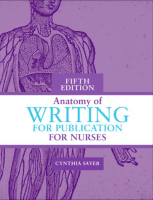


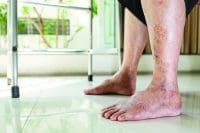
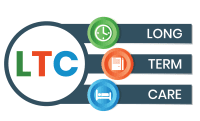


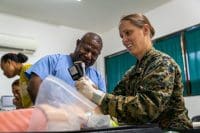


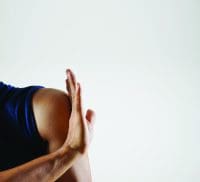




3 Comments.
[…] patients once that cause back and shoulder injuries. I’ve studied this a lot and according to one report I read, nurses lift on average 1.8 tons of weight per day. Patients are bigger than ever and the […]
The number one cost saver for hospitals is UNDER STAFFING.
It’s everywhere. It’s perpetual. It’s ALWAYS been that way and it always will be that way.
Nurses are, for the most part, WOMEN. And they won’t stand up for themselves.
AND, at the end of a 12 hour day, you don’t want to stick around and write up a report as to why you were injured.
AND, if you are injured, you don’t want to leave early and screw your fellow nurses with a harder assignment when having to take over your patien
For 38 years I have been preaching that same message-no one should be lifting patients! This is whi nurses and nuring personnel have battered bodies. Until the Nursing organizations and Nursing Acdemeia get on the boat and DEMAND nursing to STOP moving patient and facilities to obtain patient moving equipment NOTHING will happen except nurses will continue to injure themselves.